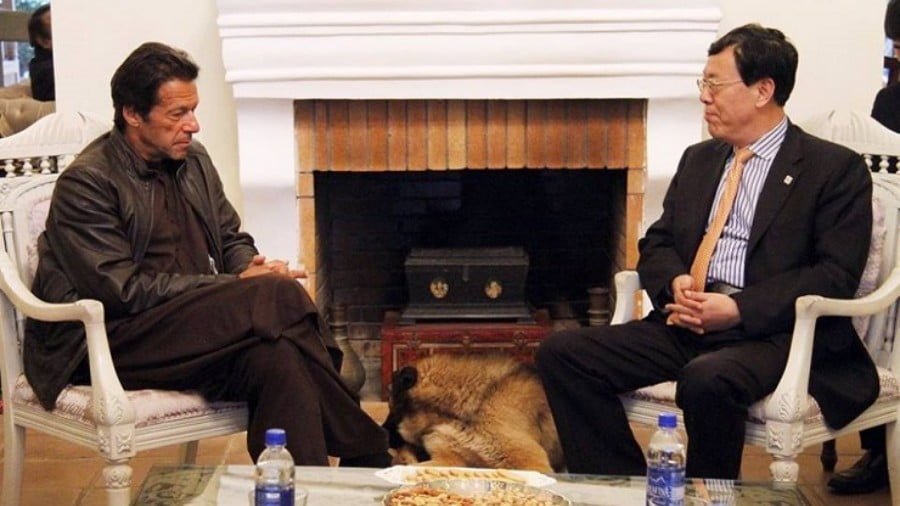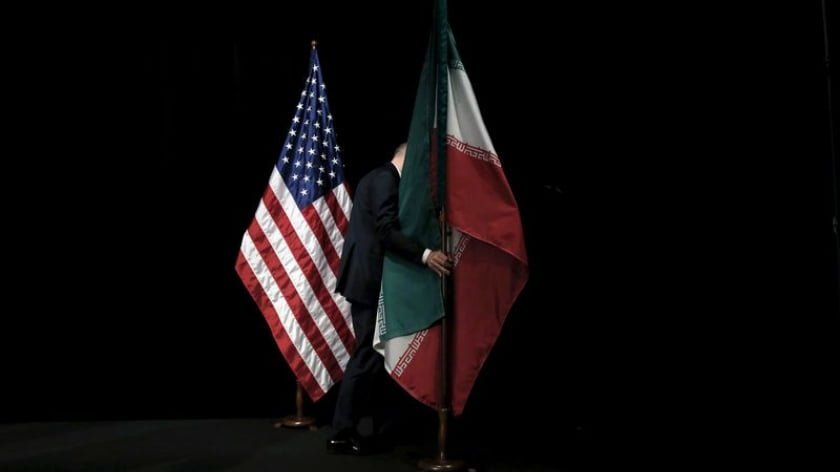Pakistan’s Prime Minister Pays Visit to China
Pakistan’s Prime Minister Imran Khan accepted an invitation from his Chinese colleague Li Keqiang to visit China from 2 to 5 November. The official trip and its outcomes are noteworthy for a number of different reasons, but especially when viewed from the perspective of assessing the political puzzle shaping itself in the Indo-Pacific at the moment.
Pakistan’s importance in the regional game is fairly obvious (while China’s role is self-explanatory). The nation is located in the region where interests of world and regional players such as China, India, the US, Russia, Japan and Iran collide. And Pakistan is not merely a pawn in the multifaceted rivalry among them.
In recent months important changes have taken place in Pakistan’s politics, which could have resulted in (but have not as yet) significant alterations to the part of the previously mentioned puzzle that, due to its geographic location, is referred to as the South Asian sub-region.
We would like to remind the readers that the Movement for Justice party, headed by the former professional athlete Imran Khan, won in the scheduled parliamentary elections on 25 July of this year. As a result the Pakistan Muslim League party, headed by the former Prime Minister Nawaz Sharif, was removed from power. Nawaz Sharif was actually ousted from the post of Prime Minister after the Supreme Court of Pakistan sentenced him to 10 years in prison for corrupt practices.
One of the key issues that Imran Khan’s pre-election rhetoric focused on was the need to stop the war against India stemming from the Kashmir conflict (de facto uninterrupted but mostly smoldering in nature), and to normalize their relations.
Assertion about the country’s tough financial situation was his second focal point. Thinly veiled hints were made that the financial predicament, the country found itself in, stemmed from the agreement, supported by the former government, to establish the over 3,000 km China–Pakistan Economic Corridor (CPEC), which will connect PRC’s Western provinces with the Pakistani port of Gwadar on the shores of the Arabian Sea.
Apparently, the Pakistani treasury was depleted as a result of enormous (almost one-time) outlays that will take a long time to pay off. It is important to keep in mind that CPEC is an essential component of the larger in scale PRC project, called the revived New Silk Road, aimed at connecting fates of many nations into one.
In essence, Imran Khan’s pre-election rhetoric cast a shadow on the key aspect of China’s current policy in its global standoff against the USA. This seems to be the key explanation for the somewhat reserved initial reaction from Beijing towards the rise to power of Imran Khan’s party in a nation that has, de facto, been one of PRC’s key allies for a long time.
However, events that followed made the prospect of a break in the China-Pakistan relationship illusory considering the continuously worsening relations between Islamabad and Washington, and highlighted Pakistan’s basic need to re-establish closer ties with China.
One such key event took place on 6 September in New Delhi, where Ministers of Foreign Affairs and Defense from the US and India met. On one hand, the visit marked a significant new step in the long-term process of bringing the two nations closer together, encouraged, in large part, by their common fears that PRC will become the second world power.
For Pakistan some points in the “Joint Statement”, made as a result of the US- Indian 2+2 talks, signaled an end to any illusions that its relations with India may improve (especially quickly). Then new tensions ensued in the Indian part of former Kashmir, near the Pakistani border, with an accompanying war of words (that has long become routine) between the Ministers of Foreign Affairs of both nations at the scheduled session of the UN General Assembly.
An essential prerequisite for reviving the positive trend in Pakistani relations with Beijing was the requirement for Islamabad to reiterate “a password” of sorts, amounting to Pakistan’s demonstration of its unwavering support for the implementation of the CPEC project. Hence, various representatives of Imran Khan’s government showed this support at meetings with their Chinese colleagues.
These words of endorsement were the focus of all the speeches made by the Pakistani Prime Minister during his visit to PRC. The Joint Statement, released by China and Pakistan, contains a section dedicated to the CPEC. Notably, the two sides “reaffirmed their complete consensus on the future trajectory of the CPEC” and its timely completion, and also expressed their determination to safeguard the project from any negative propaganda.
China demonstrated its support for Pakistani efforts to improve the relations with India and resolve any outstanding issues between the two sides. PRC and Pakistan expressed their determination to strengthen their cooperation on the Afghan issue, and to support the Afghan-led efforts to peacefully resolve the conflict in this war-torn nation.
It is hard not to miss a warning in this statement directed at the US, which has long been embroiled in the Afghan conflict, and at India, which (with support from Washington) has increased its presence in Afghanistan.
Overall, the document highlights that the weatherproof strategic relationship “between Pakistan and China has withstood the test of time, notwithstanding the changes in domestic, regional and international environments”.
The fact that the Pakistani Prime Minister attended the opening ceremony of the China International Import Expo (CIIE) in Shanghai on 5 November became a focal point of the official visit.
Judging by the scale of the exhibition; the number of leading international companies and foreign leaders invited to this event, and the fact that it was opened by PRC’s head Xi Jinping (who gave a, without any exaggeration, flagship speech there, the first CIIE is, seemingly, viewed by the Chinese leadership as the starting point of making important adjustments to the nation’s strategy of economic development and foreign policy.
The conceptual side of the future political and economic changes became the subject at the congress of the Politburo of the Communist Party of China, held a few days before the opening of CIIE.
From the author’s perspective, the main points of the speech given by the Chinese leader confirm, among other things, PRC’s desire to end the trade war against the US (which has already begun) and to find a new compromise. These statements have been met by positive steps from Washington.
New and extremely curious aspects in relations between the two world leaders, which have appeared in recent days, deserve a separate commentary.
In this article, it would suffice to say that the latest turn in the Sino-American game of chess may result in certain problems as well as new maneuvering opportunities for other important players in this game,
including, unquestionably, Pakistan. The results of Pakistani Prime Minister’s visit to China point to a revival (seemingly in the long-term) of the previous course to bring Islamabad and Beijing closer together on all fronts.
The reaction from the most invested third party (India) towards Imran Khan’s visit to China and its outcomes can be best described as neutral. On one hand, India has welcomed the aforementioned part of the Joint Statement on its relationship with Pakistan. On the other hand, India has responded negatively towards the support demonstrated by China for Pakistani ambitions to establish links with the Nuclear Suppliers Group (NSG), which India has refused to join.
Overall, it is worth reiterating that Pakistani Prime Minister’s visit to China became an important event in the process of shaping the regional political game, which is currently taking place, with decisive participation in it by players such as the USA, China, Russia, India and Japan.
By Vladimir Terekhov
Source: New Eastern Outlook







